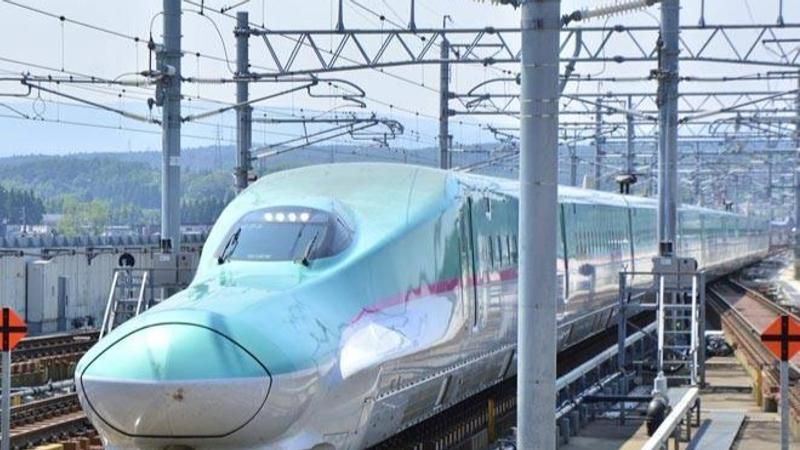Published 13:51 IST, August 24th 2024
India Set to Get Its First Bullet Train in 2026: Progress on the Mumbai-Ahmedabad Corridor
The Mumbai-Ahmedabad Bullet Train project is making steady progress, with the construction of a 1.4 km-long bridge over the Narmada River in Bharuch district.

Gujarat: India is set to launch its first bullet train by 2026. The project is making steady progress, with the construction of a 1.4 km-long bridge over the Narmada River in Bharuch district, Gujarat, currently underway.
The Mumbai-Ahmedabad Bullet Train corridor will cross the Narmada River in Gujarat. The bridge is being constructed on well foundations; a type of deep foundation used in rivers to support heavy structures such as bridges.
According to a press release from the National High-Speed Rail Corporation Limited, “With meticulous planning and a dedicated on-site team, the bridge work has achieved remarkable progress, with the completion of 19 out of 25 foundations. The work on erecting the superstructure has also commenced.”
The Narmada HSR bridge, the longest river bridge in Gujarat, features 25 well foundations. Of these, five wells extend deeper than 70 meters, with the deepest reaching a remarkable depth of 77.11 meters from the well cap top to the founding level. The remaining well foundations are approximately [specific depth needed] meters deep. Notably, four of these well foundations will exceed the inverted height of the Qutub Minar, one of India’s tallest structures, which stands at 72.5 meters according to Delhi Tourism.

The project faces significant challenges, including “tilt” and “shift” of wells during the sinking process due to natural forces such as tidal waves, high river flow, and soil conditions.
Construction was adversely affected during the monsoon season and flood situation in September 2023. A large quantity of water (approximately 18 lakh cusecs) was released from the Sardar Sarovar Dam, damaging a temporary steel bridge used for construction, submerging and malfunctioning on-site heavy-duty cranes, making work areas inaccessible, and disrupting electrical connectivity.
"The third highest concrete dam in India, the Sardar Sarovar Dam, spans 1210 meters (3970 feet) in length, with a maximum height of 163 meters above the deepest foundation level," the press release added.

Despite these challenges, site engineers worked tirelessly to restore operations. Additional teams were mobilized to continuously monitor the sinking of wells. The Jack-Down method was employed to address tilt and shift issues effectively.
Salient Features of the Bridge:
Total Spans: 24 (21 x 60m + 2 x 36m + 1 x 35m)
Number and Size of Well Foundations: 25 (10m diameter & more than 60m deep)
Total Number of Piers:25 circular piers (5m & 4m diameter)
Height of the Piers:14m to 18m Type of Superstructure:Post-Tensioned Box Girders (SBS type)
The project includes a total of 24 river bridges, with 20 in Gujarat and 4 in Maharashtra. Out of the 20 bridges in Gujarat, ten have been completed: Par (320m) in Valsad district, Purna (360m) in Navsari district, Mindhola (240m) in Navsari district, Ambika (200m) in Navsari district, Auranga (320m) in Valsad district, Venganiya (200m) in Navsari district, Mohar (160m) in Kheda district, Dhadhar (120m) in Vadodara district, Kolak River (160m) in Valsad district, and Vatrak (280m) in Kheda district.
Updated 13:51 IST, August 24th 2024




